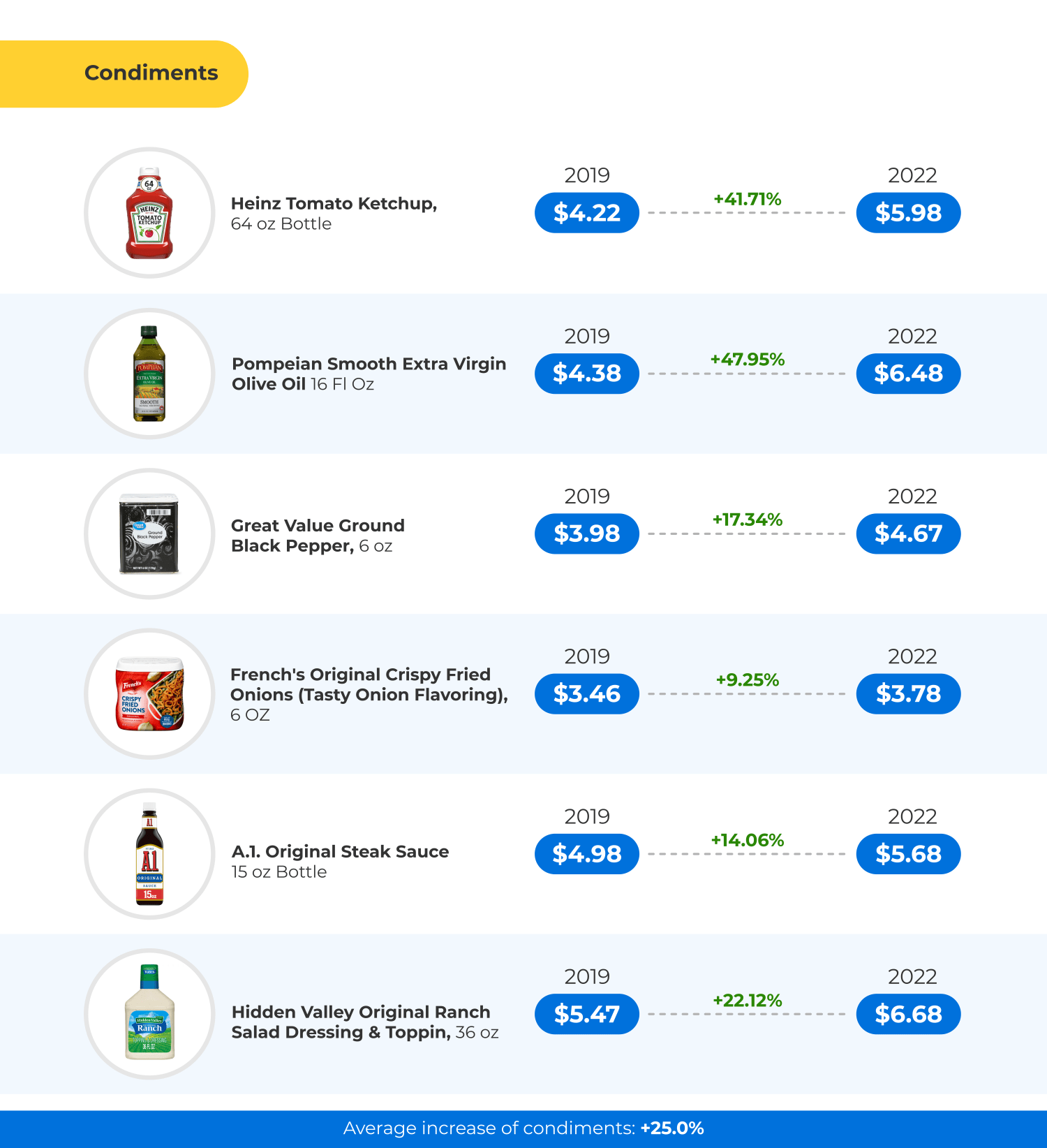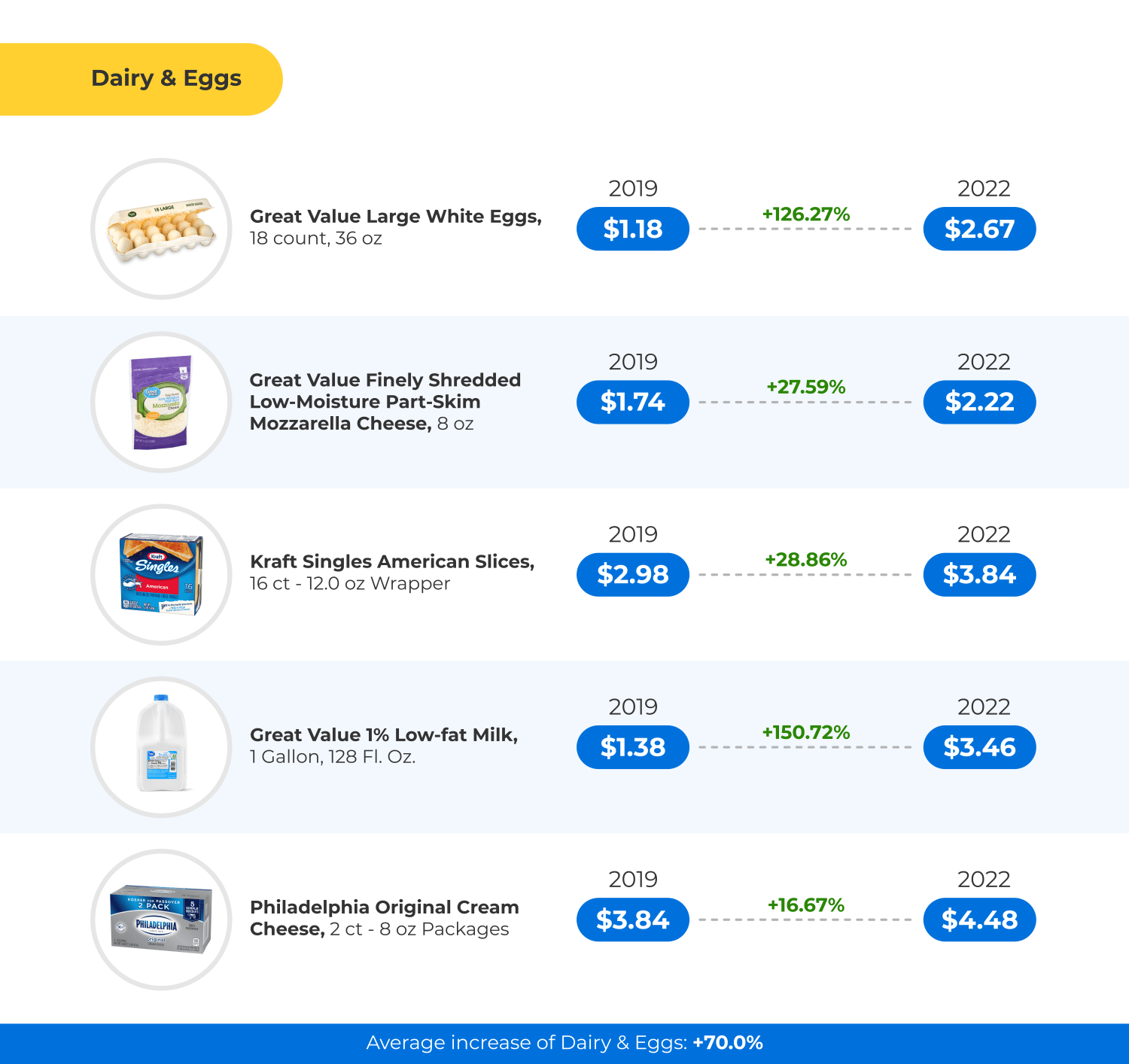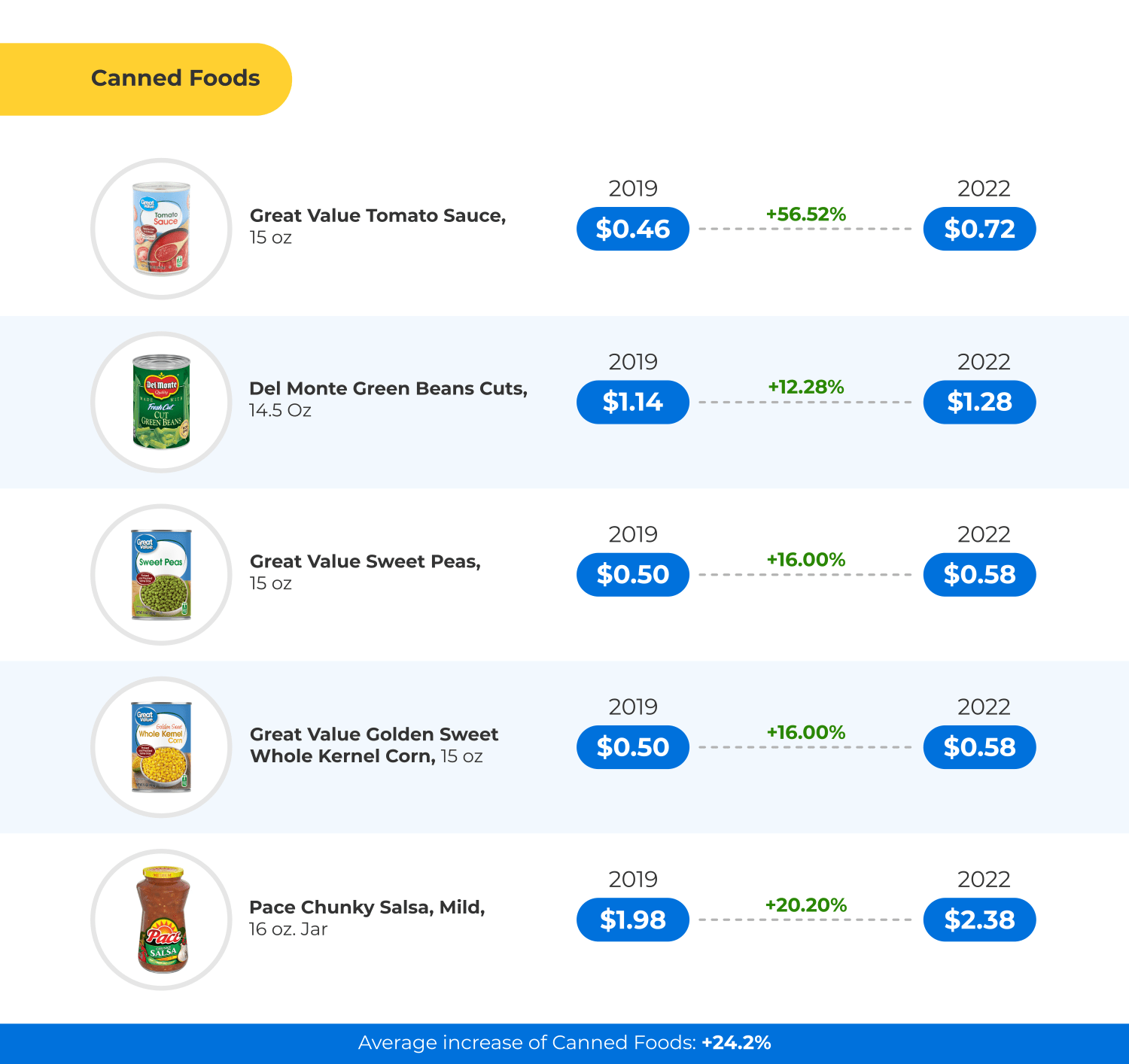Walmart grocery prices increased 21.5 percent from July 2019 to July 2022, rising faster than wages over the same period.
Consumer price inflation in the US slowed to 8.7% in July 2022 from a 41-year high in June 2022 when the inflation rate accelerated to 9.1%, the highest rate since November 1981.
According to The Federal Reserve’s economic projection published on June 15th, 2022, the personal consumption expenditures inflation rate is expected to come in at 5.2% in 2022, up from the 4.3% estimate made in March.
In light of the price increase of all consumer goods and services, Tradingpedia’s editorial team decided to compare the prices of some of the most popular grocery items in July 2022 with the pre-pandemic prices in July 2019.
In order to do that we analysed 34 grocery items available in Walmart by using the web archive tool that allowed us to see what the prices were in July 2019. Then we calculated the percentage of price increase of these 34 products and compared it with the increase in the average weekly earnings of all employees in the US between July 2019 and July 2022. The idea is to understand how the consumer purchasing power in terms of buying grocery items has changed during this period.
The grocery items we have chosen for our analysis are part of six different categories according to the Walmart categorisation:
1. Meat & Seafood/ Bacon, Hot Dogs, & Sausages
2. Fruits and vegetables
3. Beverages
4. Condiments
5. Dairy & Eggs
6. Canned Foods
Look at the results of our price comparison study below:







If we had bought all 34 grocery products subject to our analysis in July 2019, they would have cost $153.08. However, in July 2022, the total price of all products was $186.02, which is an increase of 21.5%. On the other hand, between July 2019 and July 2022, the average weekly earnings of all employees in the US increased by 15.76%, from $964.23 to $1116.54. We can see a 5.74% decrease in consumer purchasing power for grocery shopping between July 2019 and July 2022.

“It is difficult to predict when the customer purchasing power for buying groceries will reach the pre pandemic level from July 2019,” Michael Fisher, inflation analyst at TradingPedia said. “It depends on the correlation between food inflation and the average weekly earnings annual growth rate. According to a recent research published by the U.S. Department of Agriculture food-at-home ((grocery store or supermarket food purchases) prices are predicted to increase between 2.0 and 3.0 percent in 2023. On the other hand the average weekly earnings annual growth rate is between 4.9 and 5.5 percent. If we take in consideration these predictions, the customer purchasing power for buying groceries will reach the pre pandemic level from July 2019 in the first half of 2024 at earliest.”
Originally published by Tradingpedia. Republished with permission.
For more Budget & Tax News.










